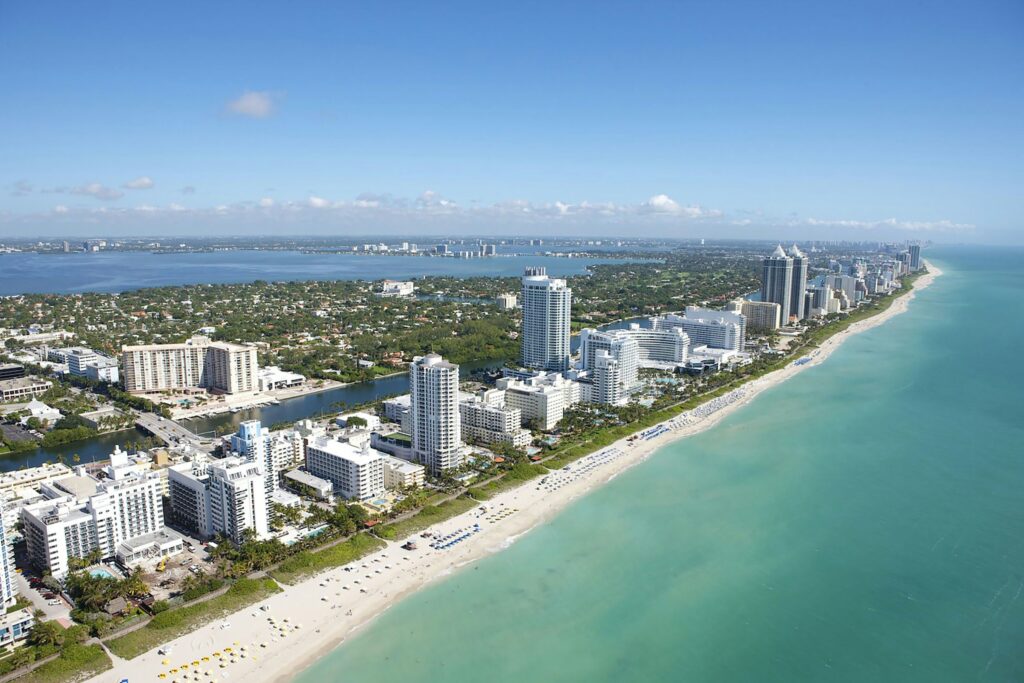Everyone has had a few friends who are “house-poor,” those whose income goes primarily to housing costs with little left for disposable income (aka “fun”). ConsumerAffairs’s latest study analyzes 2024 U.S. Census data to rank cities by the share of median homeowner income spent on housing costs, using the same 28% affordability benchmark used by lenders. Lenders’ 28/36 rule states that no more than 28% of your monthly income should go to housing costs, and no more than 36% should go to debt payments, such as credit cards, student loans, and car and mortgage payments.)
Key Insights — National
- The most house-poor city in the nation—Hialeah, FL, where the typical homeowner spends 36.9% of their income on housing costs. Runners-up are New York, New Orleans, and Los Angeles, where homeowners spend almost a third of their monthly income on housing.
- The most house-poor state—Florida, with four metros ranking in the top 10.
- In the top 20 most cost-burned cities, homeowners spend over 28% of their monthly income on housing costs – Needless to say, this exceeds the threshold recommended by lenders.
- The least house-poor city in the country—Chandler, AZ, where homeowners spend less than 19% of their income on housing costs.
Examining the Cities with the Most “House-Poor” Homeowners
The majority of the 10 most house-poor cities are located in three geographical areas: Florida (four cities on the list, three in the same metro), Southern California (2 cities), and New York (2 cities). This shouldn’t come as a huge surprise, as these three states have some of the highest costs of living in America.
The most “house-poor” cities in America are:
- Hialeah, FL (cost burden percentage: 36.9%)
- New York (33%)
- New Orleans (32.6%)
- Los Angeles (32.5%)
- Miami (32.3%)
- Pembroke Pines, FL (32%)
- St. Petersburg, FL (30.6%)
- Honolulu (30.5%)
- Yonkers, NY (30.2%)
- Chula Vista, CA (29.5%)

1. Hialeah, FL
- Annual median household income for homeowners: $71,386
- Monthly median household income: $5,949
- Median monthly housing costs with a mortgage: $2,193
The most house-poor metro in America is Hialeah, a city in the Miami-Fort Lauderdale-Pompano Beach metropolitan area—a metro that landed two other suburbs in the top 10 (Miami and Pembroke Pines). In the City of Progress, the typical homeowner spends 36.9% of their income on housing costs.
Housing costs in Hialeah are about $2,200 a month, only 7.5% higher than the national average, but many residents don’t earn enough to comfortably manage those expenses. Hialeah has one of the lowest median household incomes of all the cities we analyzed—more than one-third (34%) below the national median. And it’s getting worse: from 2020 to 2024, median housing costs increased by 45%, while incomes only grew by 35%, leaving homeowners 7.4% more house-poor.
2. New York
- Annual median household income for homeowners: $121,443
- Monthly median household income: $10,120
- Median monthly housing costs with a mortgage: $3,335
In New York City, homeowners spend nearly a third of their income on housing costs each month. While the median household income among homeowners is 18.7% higher than the national average, monthly housing costs in the city are a whopping 48% higher.
In recent years, many New Yorkers have become “severely cost-burdened,” spending more than 50% of their income on housing costs. In 2022, approximately 1 in 5 households in the city fell into this category. And to make matters worse, the city has some of the highest and fastest-rising home prices in the country, increasing by 9% from April 2024 to April 2025.
3. New Orleans
- Annual median household income for homeowners: $85,843
- Monthly median household income: $7,154
- Median monthly housing costs with a mortgage: $2,332
The third most house-poor city in America is New Orleans. Homeowners there spend 32.6% of their monthly income on rent. Among the top 10 most house-poor cities, the Big Easy is the only city where 2024 median home values are below the national average ($305,100, compared with $360,600).
But the typical monthly housing costs are 13.6% more than the national average. And climate change-related risks such as intensifying heat and increased tropical storms have resulted in soaring home insurance rates and utility costs, stretching budgets even more. New Orleans has tended more and more house-poor since 2020, becoming 6.1% more house-poor in the last four years. But the city actually became slightly less house-poor from 2023 to 2024, when the median household income rose more (7.1%) than the city’s housing costs (2.1%) year-over-year.
4. Los Angeles
- Annual median household income for homeowners: $130,265
- Monthly median household income: $10,855
- Median monthly housing costs with a mortgage: $3,523
Homeowners in the City of Angels spend 32.5% of their income on housing costs, which at more than $3,500 are the highest of the top 10 most house-poor cities and the ninth highest in the country. Overall, Angelenos are just a hair better off than homeowners in New Orleans: The difference in cost burden percentage between the two cities is just a tenth of a point.
Property taxes make up a significant part of the housing expenses in LA, where the effective tax rate is only 0.69%. That’s lower than 112 of the cities we analyzed, and the second-lowest rate among the top 10 most house-poor cities. But when you take into account that home values in Los Angeles are astronomical (the median home value last year was $947,900)… A typical household paid $6,918 in property taxes in 2024, 93% higher than the national median property taxes paid last year.
5. Miami
- Annual median household income for homeowners: $107,481
- Monthly median household income: $8,957
- Median monthly housing costs with a mortgage: $2,893

The typical Magic City homeowner spends nearly a third of their income on housing costs. Miamians only earn 6.5% more than the national median household income, but housing costs in Miami are almost $2,900 a month—35% higher than the national average.
Much of Miami’s economy is driven by low-wage sectors, like health, hospitality, and services. This means that many households don’t make enough to comfortably afford a home. Analysts predict that future job growth will be mostly low-wage: seven out of the 10 occupations expected to create the most jobs by 2030 are projected to earn under $18 an hour. That’s a salary of roughly $37,000 a year, but Miami households need to earn $176,438 a year to afford the typical monthly home payments.
What are the top 10 cities with the least cost-burdened homeowners?
There are a few geographical clusters among the cities where homeowners are the least house-poor:
- North Carolina—NC has three cities at the bottom of the list, including two (Durham and Cary) that are in the “Research Triangle” area.
- Arizona—Its two cities are in the Phoenix metro area.
- The Rust Belt region—Two cities on the list here.
The remaining cities are scattered across the West, South and Midwest.
The least “house-poor” cities in America are:
- Chandler, AZ*
- Cary, NC**
- Huntsville, AL
- Durham, NC
- Toledo, Ohio
- Gilbert, AZ***
- Madison, WI
- Grand Rapids
- Salt Lake City
- Charlotte, NC

Notes: *The least house-poor homeowners reside in Chandler, where they spend only 18.4% of their income on housing costs.
**With its low cost of living, strong economy, and highly-educated population, Cary, NC ranks as the best place to move to in the South.
***Gilbert, AZ, is one of the most accessible cities for first-time homebuyers. Millennial and Gen Z residents have a combined homeownership rate of 26.8%, the highest in the nation.
How do housing costs compare across the U.S.?
In recent years, housing costs have been rising faster than incomes. From 2020 to 2024, the national median household income rose by 24%. During the same period, median monthly housing costs increased by 26%. Nationwide, homeowners are only about 1% more cost-burdened than they were five years ago. But the reality in some cities is far more extreme, with housing costs rising as much as 40% to 50% in that short period.
How do you avoid becoming house-poor?
Whether you’re a first-time homebuyer or revisiting how much you’re spending on your existing home, check out these tips to keep a balanced budget.
- Stick to the 28% rule. Lenders may approve you for more than you can comfortably afford, but “shooting to the top of your loan approval is a big red flag,” said Nico Real, a real estate agent with The Real Estate Ranch, a Texas-based firm.
- Factor in hidden costs. Expenses like property taxes, home insurance, and HOA fees can quickly add up. And don’t forget to leave yourself plenty of wiggle room for maintenance and repair costs.
- Build in a cushion. Leave room in your budget for emergencies and unexpected expenses, especially important if you’re transitioning out of the rental market.
- Shop around for mortgages. Even a 0.5% rate difference can save thousands each year. And trust your gut if your lender seems overly eager to get you to sign on the dotted line.
- Don’t get carried away. “Buyers will often throw out financial reasoning when their ‘dream home’ pops up,” Real said. “Stay grounded and make sure your dream home doesn’t throw you into a financial nightmare.”
To read more, click here.
The post Where Are America’s Most House-Poor Cities? first appeared on The MortgagePoint.























